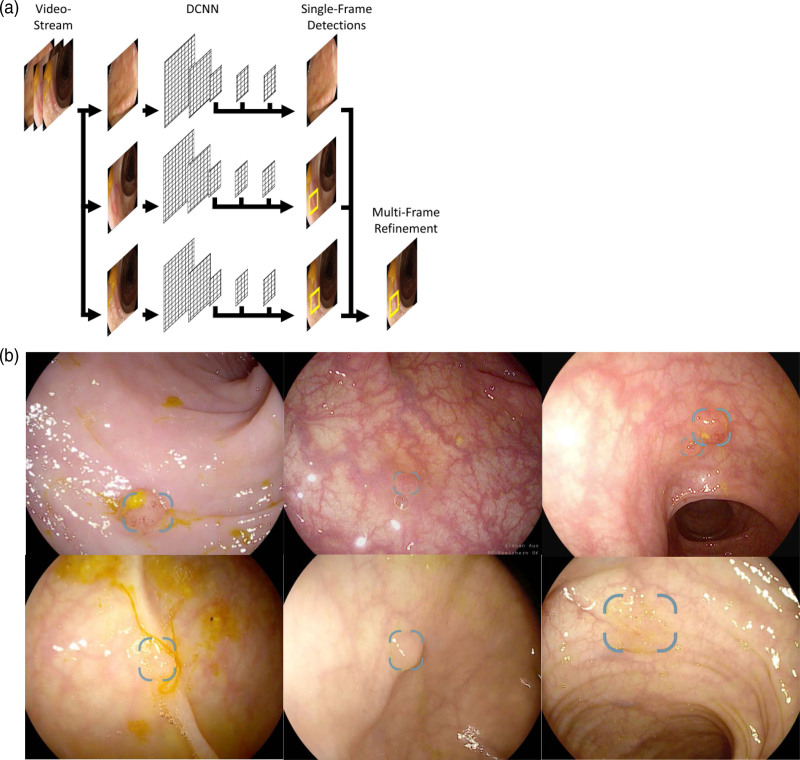Fig. 1.
Development and diagnostic output of the system. (a) The deep convolutional neural network (DCNN) processes video data as a sequence of single video frames and generates predictions based on the visual evidence of a single video frame. The predictions from individual frames are then fused to provide a more stable detection. (b) Different examples of polyp detection with the DCNN during routine colonoscopy. The computer-aided detection (CAD) system generates the diagnostic output on a second screen on which polyps are highlighted by a bounding box. Note that the DCNN is able to detect multiple polyps in a single frame simultaneously (upper right picture).

